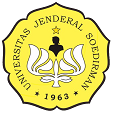Antimalarial Activity of Mangrove Plants and Possible Mechanisms of Action: A Scoping Review
Abstract
Malaria is one of life threatening-infectious diseases with high mortality rate in African regions. Malaria is also one of public health problem in most of Southeast Asia (SEA) regions. This disease is caused by a Apicomplexan parasite; Plasmodium sp., which can be transmitted from humans to humans via Anopheles sp. To date, the need of a new antimalarial drug is still high, due to the rapid increase of drug resistance. Natural-derived drug candidates are still being used by researchers to develop new antimalarials. One of the natural resources which could potentially be a source of antimalarial agents are mangrove plants. Traditionally, mangrove plants have been employed as antibacterial, antioxidant, anticancer, and antidiabetic. Therefore, we conducted a scoping review to identify, evaluate and summarize findings of newly found antimalarial drug activity from mangrove plants and elaborate the possible mechanism of actions in killing the parasites. From several databases, we found six mangrove species which have been suggested as potential antimalarial sources. Various phytochemical compounds in extracts made from those plants were revealed to exert antimalarial activity. These include alkaloids, flavonoids, tannins, phenols, terpenoids, saponins, coumarins, triterpenes, glycosides, and anthraquinones which were indicated to have antimalarial activity against Plasmodium. From eight studies investigating mangrove plant extracts, no toxic effects were shown. Therefore, considering the available evidences, we suggested that mangrove plants can be used as a source for the discovery of antimalarial compounds with promising activities against Plasmodium sp. However, deeper understanding on the exact mechanisms of their actions still requires further elucidation.
Keywords: Antimalaria, Anthraquinone, Mangrove, Plasmodium sp., Protozoa
Authors agree with the statements below:
- Authors automatically transfer the copyright to the MOLEKUL journal and grant the journal right of first publication with the work simultaneously licensed under a Creative Commons Attribution 4.0 International License (CC BY 4.0).
- Authors are able to enter into separate permission for the non-exclusive distribution of the journal's published version of the work (e.g., post it to an institutional repository or publish it in a book), with an acknowledgment of its initial publication in this journal.













